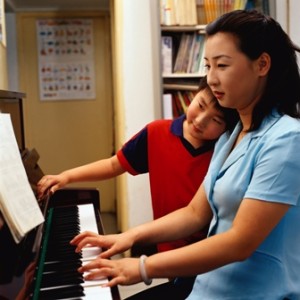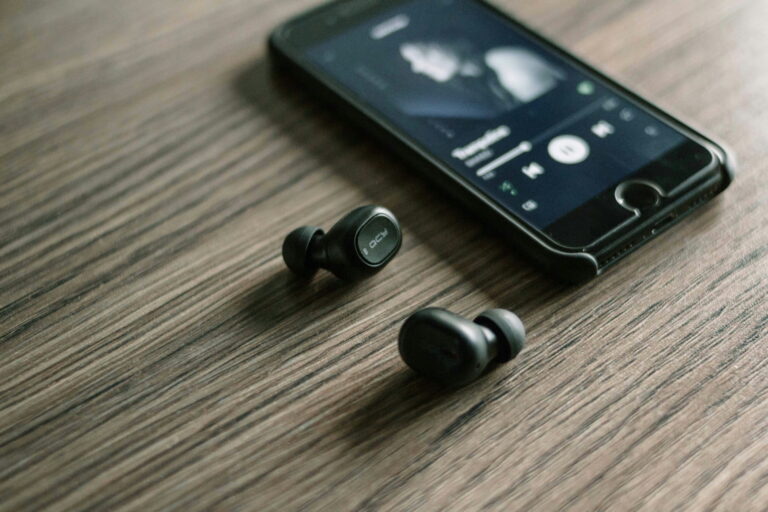China’s first piano factory was opened in 1895 in Shanghai. During the 1950s, the Communists have divided the country into four piano manufacturing factories owned by the government: Shanghai, Beijing Dongbei, in the north of China and Guangzhou Pearl River in the south. Although the piano industry in China remained primitive in the 1990s during this decade, the Chinese government began to open its economy to foreign capital investment, first in partnership with government and later to completely private concerns.
China’s open economy and rising middle and upper classes helped to develop a strong increase in demand for pianos. Thanks to the enormous potential of the Chinese domestic market and the popularity of cheap products manufactured for the Western, foreign interests have built new piano factories in China. The government has also provided the money for its own plants to make them more competitive and respond to the growing demand.
Overview of the Piano Industry in China
Piano industry, which is native to Europe in the 18th century, turned to China in the late 1990s Currently, China is the world’s largest piano producer, with output in 2014 to nearly 382,000 units, representing 79.6% of the global total. More than 382,000 pianos were manufactured by China in 2014 and have imported nearly 100,000 units in the same year, approximately 80 percent of the total, making China the largest producer of pianos in the world.
Nowadays, China is considered like the largest piano manufacturer in the world. China’s piano market has become the fastest-growing, largest and most promising market in the world, and the volume of production and sales totaled almost 80% of world piano market. Currently, the demand for the piano industry is mainly based in Asia and Europe, and China is the largest producer. The overall volume of piano production was nearly 475 thousand units in 2013. The total volume in Asia was 445 thousand units or nearly 94% of the overall volume of production and China accounted for 73% of the total, China’s piano production. In 2014, the total production volume of the piano in China reached 490.746 units, with a growth of 8.05%.
During the last five years to 2015, revenue for the manufacturing of musical instruments in China was estimated at an annualized rate of 10.1%, that is to say, $ 5.9 billion. The industry has been export-oriented for a long time, total export turnover reached a peak of 69.0% in 2005; this share declined to 47.3% in 2010 and has declined since. Exports now account for only 29.9% of the revenues in 2015. In the next five years, exports should rise slowly to an annualized rate of 0.2%. Moreover, piano demand in China experienced strong growth, pianos with the property for 100 urban households nearing 3.0 units in 2013 and this figure rose to 3.25 units in 2015 and it is planned to increase to almost 4.0 units by 2020.
To 2020, the added value of the industry will increase at an annualized rate of 9.3%. Compared with GDP growth in China of about 6.5% over the four years up to 2020, the industry has introduced high-performance.
China’s piano industry can be divided into three sectors:
- Piano for the domestic market, built in large factories, assembled from aftermarket parts suppliers in small private installations.
- Piano for export, they are entry level instruments built for some of the largest companies in the piano industry (Samick, Young Chang, Yamaha, etc.), or as private labels for major retailers.
- Small factories directly in partnership with the European factories co-produce the piano which is rapidly becoming the largest part of the mid-range piano industry.
The Piano Manufacturers in China
 Pearl River, Hangzhou Yamaha, Yichang Jinbao, Xinhai, and Hailun are the top five manufacturers with a total production of 292,000 units, consisting of 77.86% of piano production in China. The capacity of production of each manufacturer exceeded 200,000 units per year.
Pearl River, Hangzhou Yamaha, Yichang Jinbao, Xinhai, and Hailun are the top five manufacturers with a total production of 292,000 units, consisting of 77.86% of piano production in China. The capacity of production of each manufacturer exceeded 200,000 units per year.
- Since 2002, the Canadian manufacturer Pearl River Piano is the largest manufacturer and supplier in the world, it is the first Chinese piano manufacturer with an annual production and sales volume exceeding 100 000 units, and its market share remains at over 20%.
- Yamaha made it’s entered the Chinese market in 2002 and has so far established six subsidiaries in China, including a piano manufacturer, such as Hangzhou Yamaha Musical Instruments which produced 67,000 pianos in 2013.
- Steinway & Sons is one of the world’s most famous piano makers; it has expanded its operations in China by opening its branch office in Shanghai to be the seat of the Asia Pacific Society companies. Parents who buy pianos for their young children, nearly half of the company’s revenues come from some Asian countries like China. In 2013 Steinway & Sons has seen its sales overall piano business reach nearly 3.6 percent or $ 220 million. Its revenue in China reached $ 15.6 million this year, up 21.3 percent compared to 2012.
- In 2005 the German Bluthner, one of the best luxury piano manufacturers in the world, has also entered the Chinese market in May 2006; it opened its first factory in China in Guangzhou. Five years later, its annual production reached 5,000 units, growing at the rate of 1,000 units per year. But over the past two years, the annual growth rate decreased due to the slowdown of the Chinese economy and falling demand. In 2011, Bluthner invested $ 19 million in another factory in Guangzhou to develop its production capacity and improve its products.
Piano is the New Trend in China
The growing number of children learning the piano has also promoted the steady growth of imports, with an annual growth rate of 29.3 percent from 2008 to 2013.
Middle-class families in China are able to offer a piano and lessons to their children. In 2013, ownership of pianos increased to three pianos per 100 urban households, and it is expected that number to grow four times by 2020. But there is still a large gap between China and other developed countries. Which is 20-30 pianos per 100 households in terms of piano ownership, which means that there is still a great potential for growth.
To know more about China’s market contact us at dx@daxueconsulting.com





